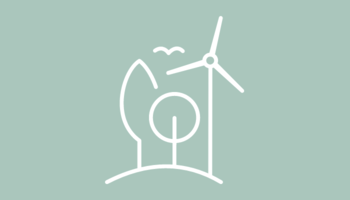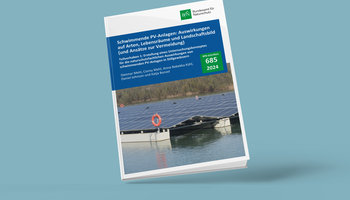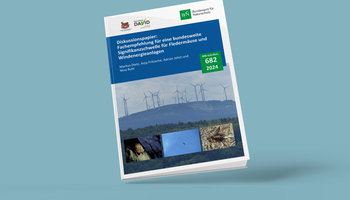This project develops a research concept for the production and evaluation of fish protection and fish bypass facilities at hydropower sites at Eddersheim/Main and Griesheim. The effectiveness of various fish protection and fish bypass facilities will be evaluated by a monitoring system.
Under the Water Resources Act (Wasserhaushaltsgesetz), suitable measures must be guaranteed at hydropower plants to protect fish populations. This is particularly important in medium-sized and large rivers as they provide the main connecting routes for those fish species that rely on long-distance migrations to maintain the species. This project examines the usefulness of globally available fish protection and fish bypass technologies at hydropower sites with a turbine flow rate of over 50 m3/s. This first requires a review of the existing approaches for fish protection during downstream migration. This will form the basis of a research concept for producing and evaluating fish protection and bypass installations at the Eddersheim and Griesheim am Main hydropower sites (> 50 m3/s turbine flow rate). The facilities, which are managed by the federal government, will then be established as pilot sites where fish protection and bypass measures can be implemented and studied at industrial-scale plants.
The first step is to identify the framework for the project. This requires a review and description of the international status of research on fish protection and fish bypasses and on the basic species-specific and developmental requirements for fish protection and fish migration. The gaps in knowledge and technical issues can then be identified and categorised. In addition, the abiotic and hydraulic parameters required for selecting the fish protection and downstream fish migration measures will be recorded. Cost factors will also be determined and an assessment made of potential impacts on hydropower utilisation. Key parameters for planning will be identified based on a description of the two sample sites of Eddersheim and Griesheim. These parameters include detailed species-specific and developmental-stage requirements of the target species. Following this, out of all the designs and methods that are judged to be effective, the project will identify those that would be suitable for e.g. the sites under consideration in terms of the ecological protection aims, technical feasibility, cost and time frame. In the final stage, a research plan will be developed for producing and evaluating fish protection and bypass facilities as well as concepts to evaluate their effectiveness with specific recommendations for when and where they are to be implemented in order to be able to study the unanswered questions.
A summary was produced of information from the literature on relevant aspects of the biology and behaviour of fish, knowledge of which is needed to maintain or restore downstream free passage. This includes details of the migratory developmental stages, swimming performance, swimming and migratory behaviour and the daily and annual rhythms of the different species.
The technical design and biological functioning principle were presented for the available techniques and methods for ensuring fish protection and passage downriver, and illustrated by means of the example of the facilities already constructed. The effectiveness and limits to use were demonstrated. In addition, unanswered questions and gaps in knowledge were formulated for the technologies and procedures described.
In order to study these unanswered questions through further research at the Eddersheim and Griesheim sites, technically feasible measures for fish protection and downstream movement were identified – taking account of existing design plans – using the target species from the fish biocoenosis of the Untermain, and recommendations made for appropriate research approaches and study designs. A total of three alternatives for further designs were suggested:
The study designs developed include information on aims, parameters and research methods. The Eddersheim and Griesheim sites are being used as research locations to study gaps in knowledge on the damage and behaviour at weirs and hydropower passes, the effectiveness and guidance effect of mechanical barriers and bypasses plus clarification of technical issues at hydropower sites with flow rates > 50 m³/s.
Ingenieurbüro Floecksmühle GmbH
Bachstr. 62-64, 52066 Aachen
Rita Keuneke
Tel. +49 241 94986-47
rita.keuneke(at)floecksmuehle-fwt.de
IfÖ – Institut für angewandte Ökologie
Neustädter Weg 25; 36320 Kirtorf-Wahlen
Dr. Beate Adam; Dr. Ulrich Schwevers
Tel.: +49 6692 6033
ifoe(at)schwevers.de
Technical University (TU) of Darmstadt
Institut für Wasserbau und Wasserwirtschaft
Franziska-Braun-Str. 7, 64287 Darmstadt
Prof. Dr.-Ing. Boris Lehmann
Tel.: +49 6151 16-21165
lehmann(at)wb.tu-darmstadt.de
Federal Agency for Nature Conservation (BfN)
II 3.2 Inland waters, floodplain ecosystems and water balance
Konstantinstr. 110, 53179 Bonn
Jonas Kötting
Tel.: +49 228 8491-1845
jonas.koetting(at)BfN.de
03.04.2024
Weiter

03.04.2024
Weiter

19.03.2024
Weiter
